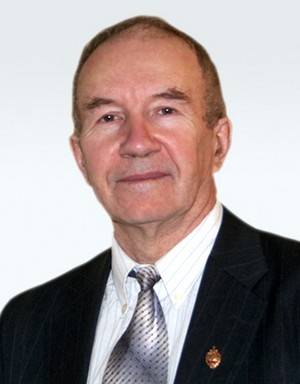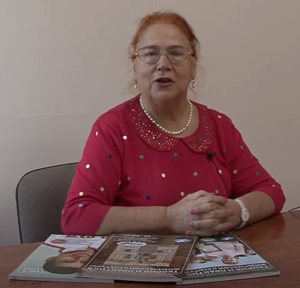Effect of increase of effectiveness of sports performances at stimulation of dynamic cerebral systems by "emotiocorrector ondiz"
Фотографии:
ˑ:
Effect of increase of effectiveness of sports performances at stimulation of dynamic cerebral systems by "emotiocorrector ondiz"
N.D. Ovchinnikov, Professor, Dr.Hab. A.N. Korol'kov, Ph.D. V.I. Egozina, Professor, Dr.Hab. D.N. Ovchinnikov, Postgraduate, Research laboratory ONDIZ, Moscow, Russian state university of physical culture, sport, youth and tourism, Moscow
Key words: athletes, minigolf, motor program, "Emotiocorrector Ondiz".
The purpose of the present research was to determine effectiveness of stimulation of dynamic cerebral systems in participants of sports competitions in minigolf.
The results of conducted studies testify to the fact that the light-color stimulation by the program of activation of formation of motor programs in th ecerebral motor zone promotes improvement of results of sports activity.
The research results correlate with the viewpoint of some experts on the role of functional status of cerebral cortex and human central nervous system in achievement of success in sport.
The use of the technique and the device "Emotiocorrector ONDIZ" to correct psychoemotional status and stimulate dynamic cerebral systems of athletes reveals capacities of increase of effectiveness of training and competitive activities.
Bibliography
1. Blum, F. Brain, mind, behavior. Cerebral asymmetry / F. Blum, A. Layzerson, L. Hofstedter. – Мoscow: Мир, 1983. (In Russian)
2. Grigor'ev, A.I. Molecular mechanisms of adaptation to stress: genes of early response / A.I. Grigor'ev, A.G. Tonevitskiy // Ros. fiziologich. zhurnal im. I.M. Sechenova. – 2009. – № 10. – P. 1041–1057. (In Russian)
3. Egozina, V.I. Functional hemispheric asymmetry at emotional conditions in teenagers and correction of neuroemotional tension of physical exercises / V.I. Egozina, N.D. Ovchinnikov // Fizicheskaya kultura: vospitanie, obrazovanie, trenirovka. – Мoscow, 2003. – № 4. (In Russian)
4. Kulachev, A.P. Means and methods of integrated data analysis: study guide, 4th ed., rev. and comp. / A.P. Kulaichev. – Мoscow: FORUM: INFRA-M, 2010. – 512 P.: ill. (In Russian)
5. Luriya, A.R. Superior cortical human functions / A.R. Luriya. – Мoscow: Nauka. 2008. (In Russian)
6. Makarova, G.A. Trainer's medical dictionary / G.A. Makarova, S.A. Loktev. – Мoscow: Sovetskiy sport, 2006. – 587 P. (In Russian)
7. Ovchinnikov, N.D. Patent of the RF № 2336020 «Method of correction of psychoemotional condition and stimulation of activity of dynamic cerebral human systems». Publ. 20.10.2008. Bul. № 29 / N.D. Ovchinnikov. (In Russian)
8. Ovchinnikov, N.D. Patent of the RF № 2340281 «Method of allocation of time of formation of motor programs in human central nervous system» Publ. 20.10.2008. Bul. № 29 / N.D. Ovchinnikov. (In Russian)
9. Ovchinnikov, N.D. Technique of estimation of psychoemotional tension and direction of personal motivationsregarding some preferences of color test-cards by Luscher / N.D. Ovchinnikov, V.I. Egozina // Sportivniy psikholog. – Мoscow: RSUPC, 2005. – №1. –P. 82–86. (In Russian)
10. Ovchinnikov, N.D. Some results of estimation of adaptive tension and direction of increase of success of Russian athletes' performance on the Olympics 2008 / N.D. Ovchinnikov, V.I. Egozina // Teoriya i praktika fizicheskoy kultury. – 2007. – № 5. – P. 34–38. (In Russian)
11. Ovchinnikov, N.D. Patent of the RF № 2349255 «Method of allocation of rules of functional dynamic cerebral human structures». Publ. 20.10.2008. Bul. № 29 / N.D. Ovchinnikov. (In Russian)
12. Ovchinnikov, N.D. Patent of the RF №2394487 «Gadget for correction of psychoemotional status and stimulation of activity of dynamic cerebral human systems» (20.10. 2008) / N.D. Ovchinnikov. (In Russian)
13. Simonov, P.V. Emotional cerebral mechanisms / P.V. Simonov// Zhurnal vyssh. nerv. deyat. – 1997. – V. 47. – Вып. 2. (In Russian)
14. Sudakov, K.V. Normal physiology / K.V. Sudakov. – Мoscow: Med. informatsionnoe agentstvo, 2006. – 920 P. (In Russian)



